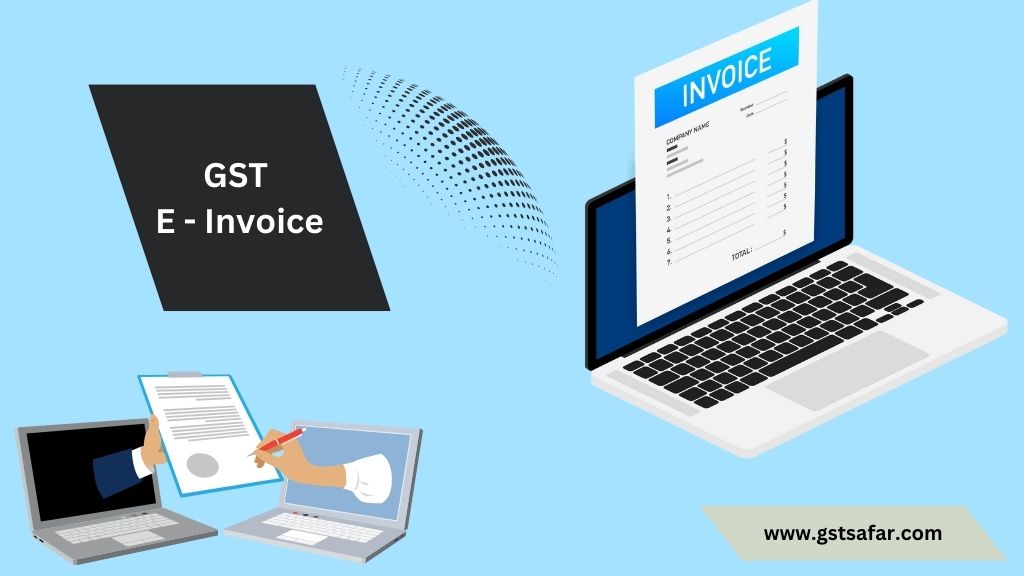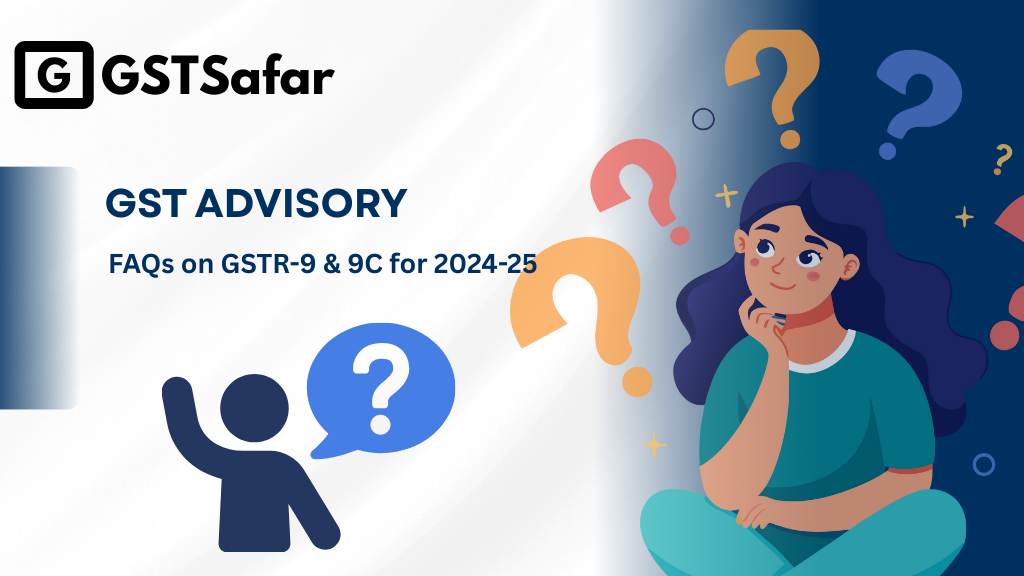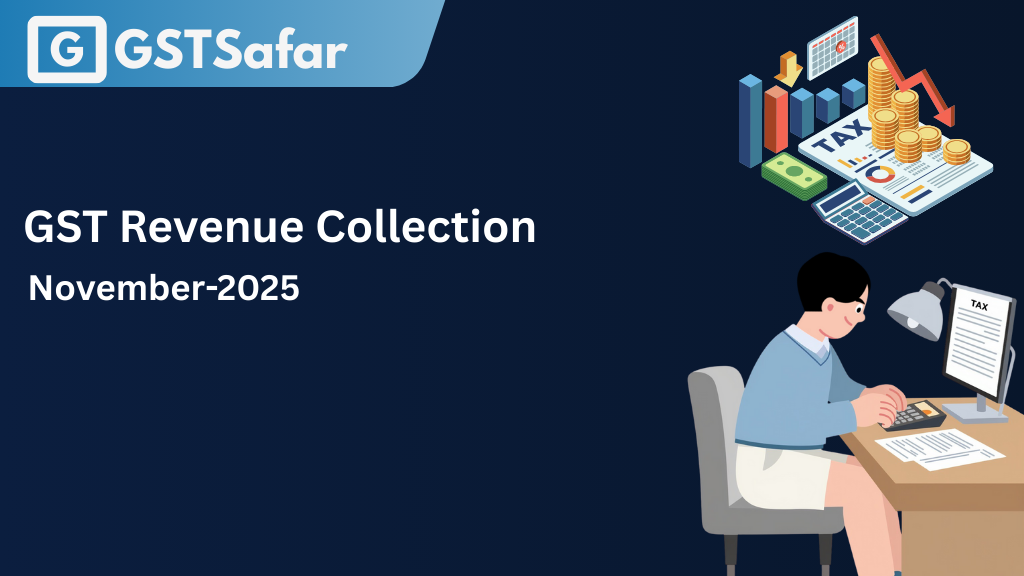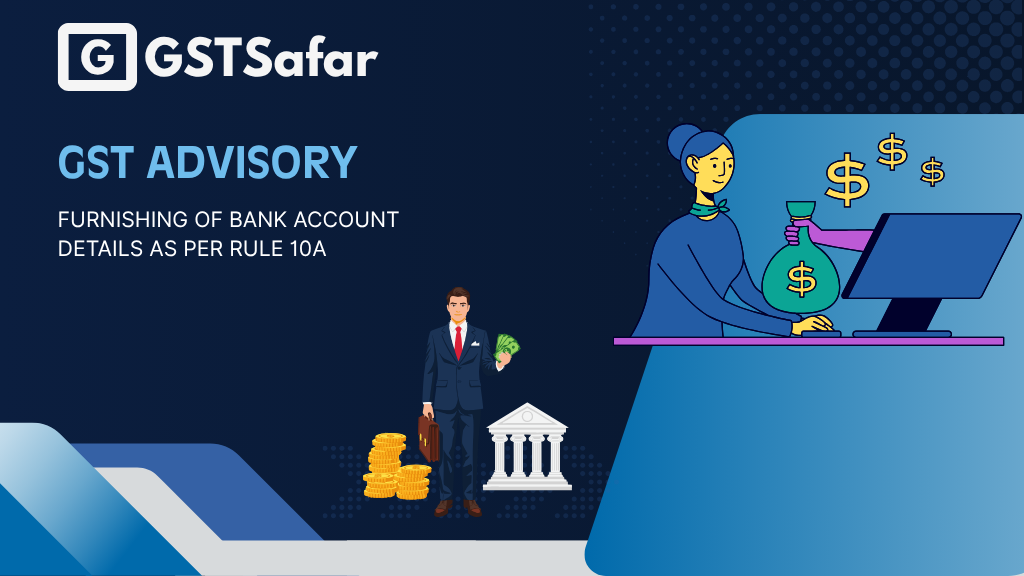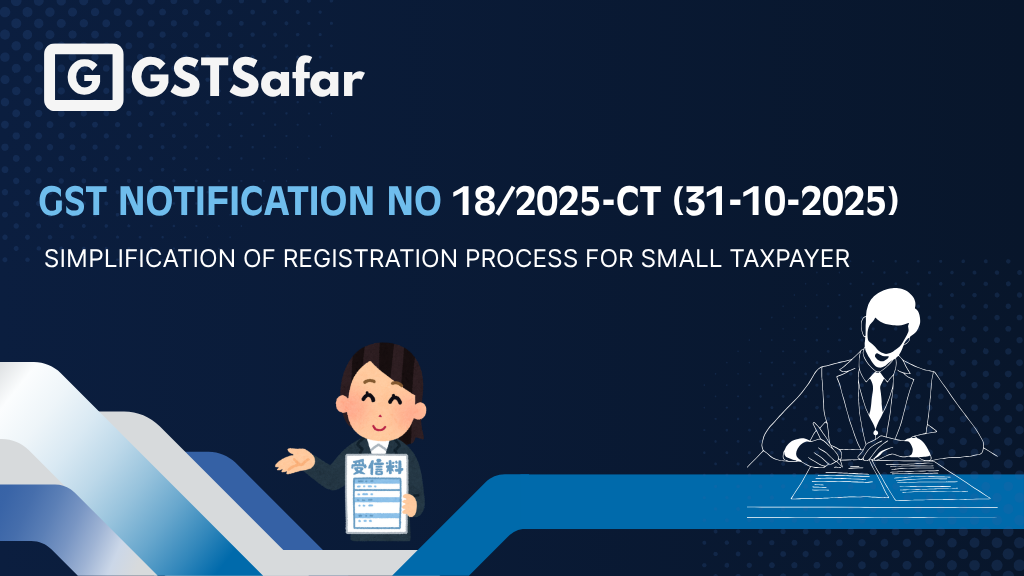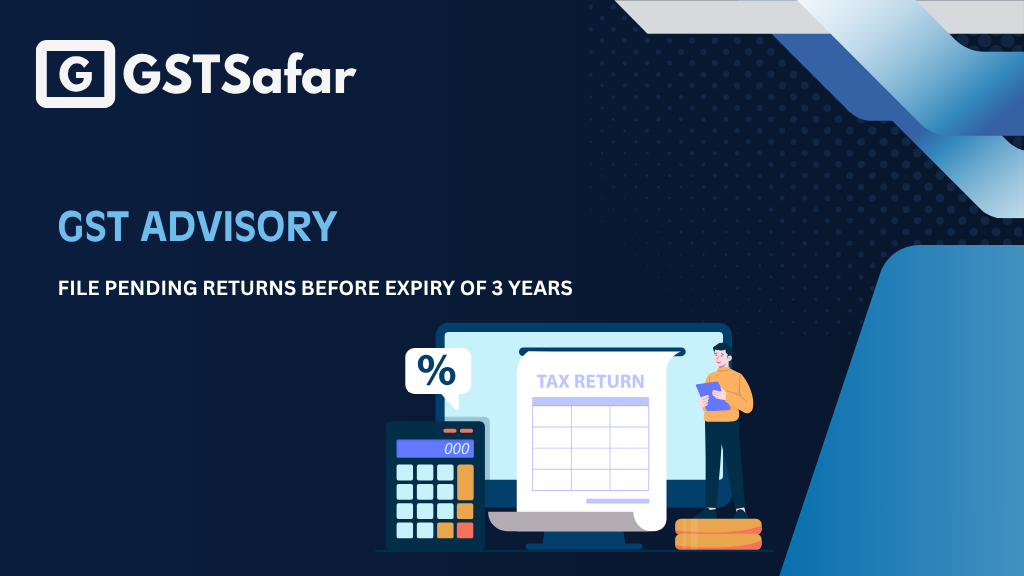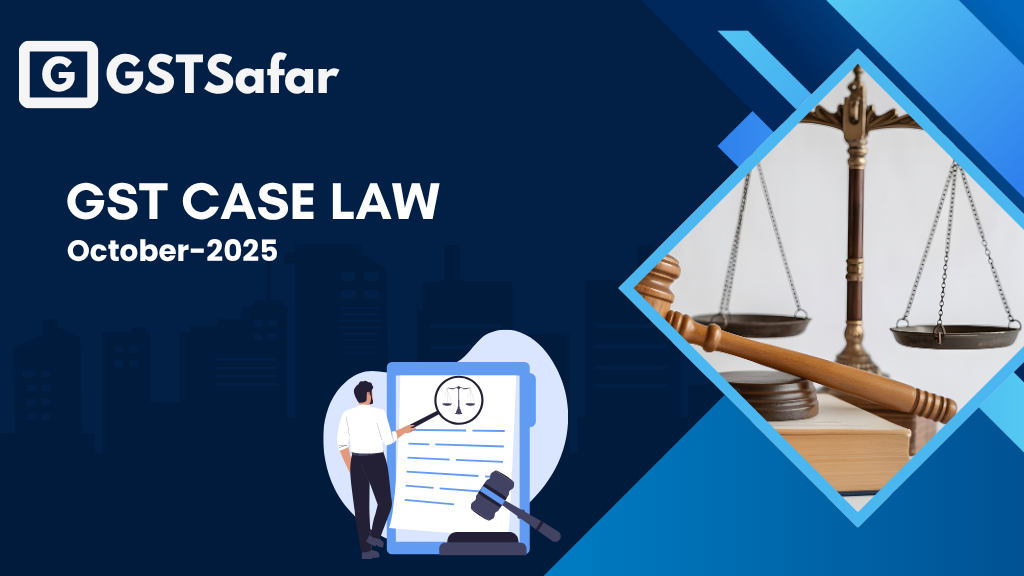The concept of GST E-Invoice has been introduced by Government to make all invoice in digital form and for ease to access in 2019 by the Notification No.70/2019 – Central Tax dated 13-12-2019. Afterwards such notification was rescinded and Notification No.13/2020-central tax dated 21-03-2020 has come. By this notification provision of E -Invoicing will be effective from October-2020 to all over nation. E invoice known as “Electronic Invoicing” is a system in which all B2B invoices are electronically uploaded and authenticated by the designated portal. This system of E-Invoicing has been introduce to control GST Evasion. The E -Invoice is applicable to only whose turnover limit will cross the limit given by government. Government has set limit for applicability of E invoice.
Table of Contents
ToggleWho is eligible for GST E-Invoice?
following table contains all the details for GST E-Invoice applicability with government issued notifications.
| Sr. No | Taxpayers whose aggregate turnover exceeds | Notification No | E Invoice applicability Date |
| 1 | 100 Crore | 88/2020 | 01-01-2021 |
| 2 | 50 Crore | 05/2021 | 01-04-2021 |
| 3 | 20 Crore | 01/2022 | 01-04-2022 |
| 4 | 10 Crore | 17/2022 | 01-10-2022 |
| 5 | 5 Crore | 10/2023 | 01-08-2023 |
As per the latest mandate, all businesses with a turnover exceeding 5 crores are required to generate GST e-invoice starting from 1st August 2023. As of now, businesses with a turnover less than the mandated amount don’t need to comply with the e-invoicing norm.
If supplier & recipient both are registered person (B to B Supply) & Annual aggregate turnover > Rs.5 Crore in any preceding FY from 2017-18 onwards then E invoice is compulsory.
As per Rule 48(4) of CGST Rules Notified class of registered persons to prepare invoice by uploading specified particulars in FORM GST INV-01 On Invoice registration Portal (IRP) and Obtain Invoice Reference number. After following E invoicing process, the invoice copy (with QR code containing inter alia, IRN) issued by the notified supplier to buyer is commonly referred to as e-invoice.
1. Invoice issued by the notified person in any manner shall not be treated as an invoice (Rule 48(5)).
2. Where GST e-invoicing is applicable ,issuing of invoice in duplicate/triplicate is not required (Rule 48(6)).
3. E –invoice is not about invoice being in soft copy like PDF etc.
4. E- Invoicing doesn’t mean generation of invoice by a Government portal.
Clarification issued for GST E-Invoice
Government has issued clarification regarding GST E-Invoice in case supplies made to Government Departments or establishments / Government agencies / local authorities /PSUs etc. registered solely for the purpose of TDS.
| Issue | Clarification |
| Whether e-invoicing is applicable for supplies made by a registered person, whose turnover exceeds the prescribed threshold for generation of einvoicing, to Government Departments or establishments/ Government agencies/ local authorities/ PSUs which are registered solely for the purpose of deduction of tax at source asper provisions of section 51 of the CGST Act? | Government Departments or establishments/ Government agencies/ local authorities/ PSUs, which are required to deduct tax at source as per provisions of section 51 of the CGST/SGST Act, are liable for compulsory registration in accordance with section 24(vi) of the CGST Act. Therefore, Government Departments or establishments/ Government agencies/ local authorities/ PSUs, registered solely for the purpose of deduction of tax at source as per provisions of section 51 of the CGST Act, are to be treated as registered persons under the GST law as per provisions of clause (94) of section 2 of CGST Act. Accordingly, the registered person, whose turnover exceeds the prescribed threshold for generation of e-invoicing, is required to issue e-invoices for the supplies made to such Government Departments or establishments/ Government agencies/ local authorities/ PSUs, etc under rule 48(4) of CGST Rules. |
For more details related to 50th GST Council meeting
Types of Documents will be covered under the GST E-Invoicing system
- B2B Invoices by the Supplier
- Credit notes by the Supplier
- Debit Notes by the Supplier
- Invoice issued for Exports (With/Without Payment)
Any other document as notified under GST law to be reported as an e-invoice by the creator of the documents
Class of Registered person exempted from issuing GST E-Invoice
The taxpayers must comply with E-Invoice if the turnover exceeds the specified limit in any financial year from 2017-18 to 2021-22. Also, the aggregate turnover will include the turnover of all GSTINs under a single PAN across India. However, irrespective of the turnover, e-Invoicing shall not be applicable to the following categories of registered persons-:
- Insurer or a banking company or a financial institution, including a non-banking Financial company
- Special Economic Zone Units (excluded via CBIC Notification No.61/2020-Central tax)
- Goods transport agency supplying services in relation to transportation of goods by road in a goods carriage.
- Suppliers of passenger transportation service.
- Suppliers of services by way of admission to exhibition of cinematograph films in multiplex screens
- A Government Department and Local authority (Excluded via CBIC notification no.23/2021-Central Tax)
Invoice Registration portal| GST E-Invoice 2023
IRP is website for uploading/reporting the invoices by assigning unique IRN to invoices/debit notes/Credit notes. Numbers of portals were notified for the purpose of preparation of the invoice in terms of rule 18(4) and can be accessed at https://einvoice1-10.gst.gov.in/.
The invoices having authorized IRN are considered valid or genuine as per Law. IRP will only be a pass-through portal .it will not store or archive e-invoice data. Specified validations will be performed by IRP on invoice data. Facility available for bulk-upload of invoices (bulk generation tool).The uploaded invoice data will be digitally signed by IRP.
Functions of IRP | GST E-Invoice 2023
IRN or Hash of invoices– IRN is unique 64 character hash/string (invoices without IRN called hash). GST invoices will be valid only with valid IRN.
Note – An invoice / document number which was reported and obtained IRN, can’t be used again
Checking duplicate – Invoice‘s hash/IRN is checked for duplication or repetitions by comparing it with central repository information.
Digital signature– IRP digitally signs all the invoices that have been validated.
QR Code– IRP generates QR code for each invoice. Taxpayer can use the QR code for verification of invoice. Tax officers & other authorities can utilize to access certain information and verify the details.
By scanning QR code, one can access information
- Recipient ‘s GSTN
- Supplier ‘s GSTN
- Invoice No provided by supplier
- Date of issue invoice
- Invoice Value
- HSN code
- Number of line items
- Hash or Unique IRN
Offline app –An offline app will enable users to authenticate the QR code of an invoice. Complete details available only after the logging on the portal
Integration of GST & E way bill – Once the E invoices are uploaded, information will be automatically shared with GST System. The same will be auto populated in GSTR-1 of the seller on the GST portal & E way bill system. The main aim of the tax department is to enable the pre-population of GST returns, which will reduce reconciliation-related problems. Once e-Invoicing has been implemented, the data in the invoices can be pre-populated into the relevant tables of the tax returns without the need for fresh data entry.
E-Invoice Process| GST E-Invoice 2023
Tax payer will continue to create their GST invoices on their own accounting /Billing /ERP systems. These invoices will now be reported to Invoice Registration portal (IRP). Following are mandatory fields for E invoice in case of supply of Goods-
1. Invoice date
2. Invoice number
3. Invoice type
4. Code for the invoice type
5. Suppliers details like name of the supplier , address of the supplier including state and pin code
6. Details of buyer like name of the buyer, address, pin code and state, Payment mode & IFSC code
7. Dispatch details
8. Details of goods, assessable value, GST rates, Quantity, CGST & SGST & IGST, invoice value
9. Tax amount to be paid
10. Shipping to details like Bill to ship to or regular
The seller can create JSON following the e invoice schema and mandatory parameters by using following modes
- Utility to interact with either accounting/billing system, ERP, excel/word document, or a mobile app
- Offline Tool to generate e-invoice by keying-in invoice data
Note- Schema is the standard format for electronic invoice (INV-01) it has all the typical elements of commercial invoice. Schema ensures e- invoice is machine –readable and inter-operable i.e. the invoice can be exchanged seamlessly between different systems like Tally ,SAP etc. so e-invoicing also facilitates exchange if invoices between supplier and buyers in structured electronic format.
- The supplier has option to generate Hash based on Supplier GSTN, Invoice No and Financial year. If the Hash is validated, it will become the Invoice reference number of the invoice.
- Three Modes for Uploading JSON- 1. Using IRP(Invoice registration Portal) 2. GSP (GST Suvidha provider) 3.Third party provide apps like API 4.Mobile App based 5.SMS Based.
- For Every invoice generated Hash will be generated for invoices uploaded without Hash and later on Hash would become the IRN. Central registry will ensure that the IRN is unique. Once validated, the hash/IRN is stored in the Central Registry. IRP will then generate a QR Code and digitally sign the invoice and make it available to the supplier. The IRP also sends the e-invoice via e-mail mentioned on the invoice to the buyer and seller.
E Invoice enablement |GST E-Invoice 2023
Listing is based on the turnover of GSTR-3B as reported to GST system. In case any registered person is required to do E-invoicing but not enabled on the portal, he/she may request for enablement on the portal —> Registration—> E invoice enablement.
Steps to register on the E Invoice system
- Log in in to the Portal : For Registered taxpayers on the e-way bill portal: The same login credential can be used on the e-invoice portal. For the Unregistered taxpayers on the e-way bill portal: Here, the taxpayer must have a GSTIN and a GST registered mobile number.
- Click on Registration tab Enter the GSTN —> Enter captcha—> click on GO
- E Invoice registration Form : In this form all the details like name, address, Mobile number, Email Id will displayed —> click on Send OTP after verification of the all details.
- OTP will send on the registered mobile number —> verify the OTP
- After completion of verification one can change name & Password and save the same.
Advantages of E Invoice
- One time reporting of B2B invoices, reduce multiple reporting in different format
- Documents become tax compliant on real time basis
- Sales & Purchase register can easily generated from the data ,GST return kept ready for filling
- Simultaneous generation of E Way bill where required
- Reduction in Fake GST invoices generation
- Fraud gets reduced as tax authorities will access data on real time basis
- Reconciliation between books & GST return filed become easy and time saving.
- Single source of truth for fiscal purposes
IRN Cancellation & Amendments
- IRN Can cancelled within 24 hours ( From the time of the generation of IRN) if not cancelled within 24 hours then we have to issue the credit note for that transaction and Revised invoice issued for the same
- If the connected e-way bill is active or verified by officer during transit, cancellation of IRN will not be permitted.
- In case of cancellation of IRN, GSTR-1 also will be updated with such “cancelled” Status.
Amendments in E -Invoice
- Amendments are not possible on IRP.
- Any changes in the invoice details reported to IRP can be carried out on GST portal (While filling GSTR-1)
- However these changes will be flagged to proper officer for information
- There is no prescribed time window for reporting to IRP
